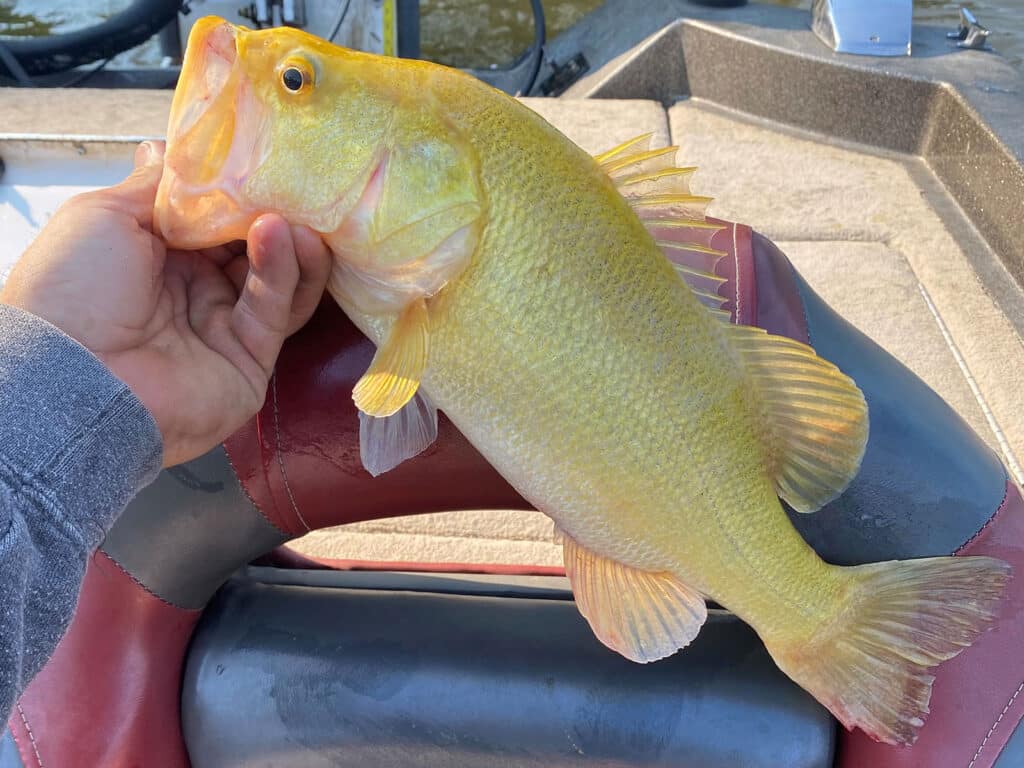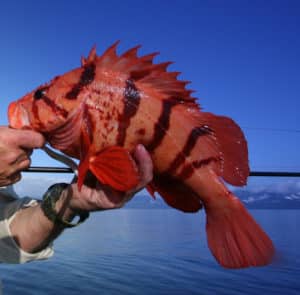
Tournament angler Jacob Moore’s bass wasn’t noteworthy for its size or length. But its color? That’s a different story. Moore was tournament pre-fishing Virginia’s James River, near Chippokes State Park, when he hooked a 16.5-inch golden largemouth bass. The catch immediately went viral across social media. Was Moore’s bass piebald, albino or maybe even radioactive?
“Golden largemouth bass are extremely rare and most anglers have never seen them, let alone heard of them before,” said Alex McCrickard, Virginia Department of Wildlife Resources Aquatic Education Coordinator. “The fish is a product of a genetic mutation that alters the skin pigments called xanthism. Yellow pigmentation dominates in xanthism, as you can see in Moore’s golden largemouth.”
Moore took a couple photos of his unique catch before releasing the bass back into the water. But he’s not the first angler to catch a golden largemouth bass, and he likely won’t be the last. Anglers, with the pictures to prove it, have caught “golden” largemouths in Florida and Ontario, Canada, among other places.
What is Xanthism?

The yellow to orange-gold coloring that defines xanthism is a rare condition in nature, although it has been documented in a surprising number salt- and freshwater fish species. Sometimes, just parts of a fish are xanthochromic.
“Xanthism is caused by a mutation that depresses the presence of [black-pigmented] melanophores, thus allowing the [yellow-pigmented] xanthophores to be expressed,” the American Fisheries Society explains. “Generally, skin color in fish has a genetic base controlled by one or several genes, but may also be influenced by factors such as behavior, disease or physiological stress.”
The aquaculture industry has used xanthism to create golden trout, tilapia and catfish. Species such as smallmouth bass, peacock bass, crappie, gar, angelfish, triggerfish, narrow-barred Spanish mackerel, tripletail, barracuda and longfin yellowtail have all been observed in xanthic yellow. Of note, palomino trout are not xanthic; that unique species is selectively bred in hatcheries to express a leucistic mutation.
Studies have shown that fish in xanthic colorations are easier for predators to spot and kill, possibly explaining why xanthic fish are so rare. So keep an eye out on your next fishing trip for that yellow- to orange-colored fish that definitely shouldn’t be those colors — the catch could be one in a million.








